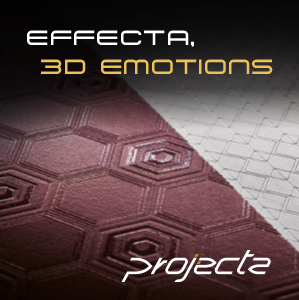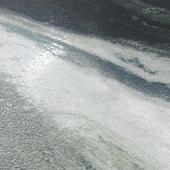TECNARGILLA 2004: Barbieri & Tarozzi
The shape of the air and gas mixing head and the silicon carbide combustion chamber have been lab-tested with the purpose of optimising heat exchange with the product to be fired where convection prevails over irradiation. The use of special so-called “radial” burners (from 6 to 14 units according to the length of the kiln) has improved the calibre tolerance by two tenths of a millimetre in medium and large tile sizes, for example single-fired and monoporous products, and with kiln inlets of 3200 mm. Gaps in production are a problem of the past. Empty spaces that may be encountered in the event that any material is missing along the production line feeding the kiln are automatically managed by systems that optimise the conditions at the outlet of the actual kiln. The multi-drive system is equipped with inverter-controlled gear motors. The consequent advantages include less product shrinkage and greater production rates from the kiln compared to the single-drive system.

The new Clock press stands out for its large loading width. The current range includes 3500 and 4600 versions, both of which have a 1750 mm clearance and models 3000 and 4600 with a widened clearance of 2250 mm. The press developed by the Barbieri & Tarozzi Group is able to satisfy the many requirements of customers in terms of versatile and optimised performance combined with increased production capacity. The structure has been analysed to optimise the distribution of mechanical stresses and to limit deformations, thereby ensuring structural rigidity and reliability. The control unit and hydraulic circuit guarantee higher production rates by increasing the number of cycles, minimising the consumption of electricity and oil and extending the life of the components. The entire hydraulic circuit has been resized, a new multiplier for the oil flow rate has been introduced to increase performance, and a new filling valve has been installed to increase the speed of the mobile crossbeam. Clock presses with loading clearance of 2250 mm are equipped with a new ejector with four thrust points accomplished by means of hydraulically synchronised cylinders controlled by proportional reaction valves, which guarantee total flatness in the extraction of large tile sizes. The Barbieri & Tarozzi group also supplies various types of more sophisticated loading systems for the production of porcelain tile, which are capable of creating through-bodied marble effects with the single-loading system and natural stone effects with the double-loading system. The linear movement of the cars is accomplished by means of belts connected to a brushless motor. The operator interface delivers top-quality performance. It is used to easily control and adjust all the phases of the process, to enter all the recipes and to save and numerically create historical lists and graphs of all the process parameters. The special features of the Clock press mean that it can manage large tile sizes while allowing for increased production capacities.

Did you find this article useful?
Join the CWW community to receive the most important news from the global ceramic industry every two weeks
Recent articles
Cersaie 2025 already booked out
Jun 27, 2025
GMM USA installs IMAnalytics system in the USA
Jun 26, 2025





















